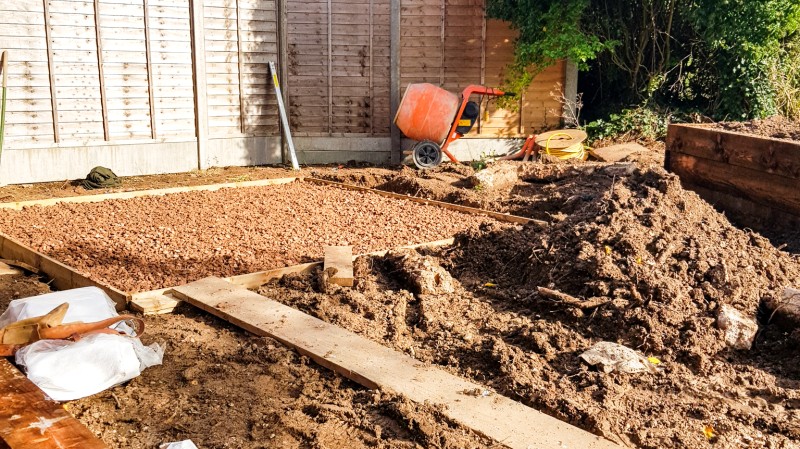You are here: Measured surveys
Do I need a measured survey for my home extension?
Surveys aren’t perhaps the most inspiring part of a building project, but they’re essential. As one of the first steps on your home extension journey, a measured survey provides a solid foundation for all the work that is to follow: planning, design and construction. Yet, when it comes to organising a survey, many homeowners can feel in the dark. What exactly is a measured survey? And how much will it cost?

What exactly is a measured survey?
Measured surveys aren’t to be confused with building surveys. A building survey is an expert inspection to check the physical condition of a property whereas a measured survey involves taking measurements of the existing building and site to provide accurate drawings to scale, including plans and elevations. A high-quality measured survey will provide a building block of information for your whole project. This kind of survey should be carried out before any design work begins.
Once the survey has been completed, these measurements can be turned into a set of manual or digital drawings suitable for computer aided design. These drawings typically include site plans, floor plans, elevations, cross-sections and roof plan.
Do I really need a measured survey?
Don’t be tempted to skip this vital first step. There is no law to say you must have a measured survey, but it’s always best to organise one. Scot Masker, of Masker Architects, explains: “You need to start with accurate information and the only way to do that is with a proper measured survey. That’s the empirical information that you need to begin your project. From there you can do further structural surveys and check the building foundations. You may need a whole range of checks to start your development on the right footing. By understanding all the existing constraints, so you can realise the opportunities.”
With a planning application, plans and elevations of your house as existing will usually be required drawn to scale, so it makes sense to have them accurately drawn from the start. The accurate drawings also help to comply with building regulations or legal requirements. For instance, under permitted development rules, there are restrictions on the size and height of extensions and proximity to boundaries. Without a measured survey it’s much more difficult to comply, potentially leading to delays, additional costs or even planning refusal.
Accurate design and planning.
Precision is key when it comes to designing an extension to your home. A measured survey provides architects and designers with accurate drawings to work from as well as anyone else involved with building, altering or demolishing structural elements of your house, including subcontractors. The drawings will not only show the overall dimensions of the property but also specific details such as height of doors and windows and location of utilities. With this information to hand, professionals can progress the design with “a reasonable amount of confidence as to what is existing,” says Masker.
You might have floorplans from the estate agent. But these drawings are simplified, and you can’t rely on them being accurate, up to date or drawn to scale. They are not of the same quality as a measured building survey. So, if you want an accurate representation of your home, providing vital data to support your home extension plans, then you need a measured building survey. Among the key benefits is that the higher level of detail will help eliminate costly mistakes.
What are the different types of measured survey?
Measured surveys can be carried out on existing houses and plots, depending on your requirements.
Building survey
A measured building survey involves the detailed measurement and recording of a property’s existing structures and features. The floor plan, a bird’s eye view of the property from above, is a drawing to scale of the inside of the building. It shows the layout and size of rooms. The staircase, doors, windows, chimney, radiators, boiler and more are also added. With this information, design professionals can identify potential limitations. You can either work around these features or strip them out and relocate them. Cross-section drawings show a view of the property across a specifically cut line depending on the required information. For instance, if you plan a loft conversion, cross-sections drawings of the roof would be needed.
Usually pictured as a view of one side of the building, an elevation drawing focuses on the external features, such as doors, windows, materials and proportions. The floor plan, elevations and cross-sections drawings are all read together to understand the building. Surveying now offers 3D rendering, meaning your home can be computer modelled. Architects can also create 3D images from 2D drawings, using SketchUp. However, for home extensions 2D surveying and drawings are still more than sufficient, says Masker.
Measured surveys can also assist the sensitive renovation of older or listed buildings. Building work can pose risk to historic fabric and fittings. When contractors are poorly briefed, the risks are much bigger. These risks can be reduced by a measured building survey. The surveyor can be instructed by your architect to flag up important decorative fixtures and fittings, such as old timber beams or wood panelling. An architect experienced in listed buildings can then design a new addition to add valuable living space while protecting any important historic building fabric. Costs associated with this work can also be built into the project’s budget.
Land and levels survey
On a plot, being informed of accurate levels and falls will allow the architect to come up with a scheme suitable for any gradients of the land. “A site survey is really important. You need to have all the levels,” says Masker. “The site survey will show siting of the building relative to adjoining structures and any potential obstacles, such as any trees within falling distance of the house or water courses. If there is a stream or river nearby that will need to be surveyed so you can address the issues that come with it being next to your property. A veteran tree within falling distance of the house may mean you need an arboricultural survey.”
Without this information, architects can’t do their job properly and that is likely to lead to problems. “The planning application could be refused, or you could have issues with the foundations which are critical to the building standing up,” says Masker.
On a steeply sloping site, a measured survey means your design team can better explore all the options, including the potential for a split-level design or even earthworks to reshape the plot. With more complex projects, the excavation, drainage and foundations are often the largest costs, so it’s essential that the architect, quantity surveyor and builder have taken this all into account before starting and agreeing the construction costs.
Traditional vs modern techniques
Surveys were traditionally done with a tape measure, paper and pencil. But technology has come a long way and there are now laser scanners that can map out the layout and dimensions of your property and the surrounding land. These lasers are a faster and a more accurate method of measurement, with arguably less potential for human error.
While some old school architects still like to carry out a measured building survey themselves, others use professional surveyors. Masker says: “It’s much more efficient to have a surveyor measure up with the technology now available – and it’s cheaper for the client.” It’s still the responsibility of the architect to understand the spatial characteristics of the building and land, says Masker, adding: “This can be achieved by walking around the property with the survey to gain an understanding of what has been drawn.”
For a small project, like a home extension, the best option is often to use an independent surveyor to carry out a measured survey. Specialist survey companies are more useful on larger developments. They have the latest scanners and software to create 3D models often used on commercial projects. Ask your architect for advice.
What does it cost?
There is no fixed fee structure as generally surveyors will charge according to the size of your property or how many days work will be required. At the lower end of the price scale, for smaller semis or terraced properties, expect to pay around £500-£800. The price can rise to £1,500-plus for larger properties or listed buildings. Opting for a measured survey can seem like an additional cost, but it’s a wise investment. Without accurate measurements, problems are likely to arise during construction, leading to costly rebuilding and delays.
If you are looking to make some home improvements, you may find some of these services useful
Building Regulations
Find details of local experts who can help with Building Regulations
Builders
Find local help with a building project
Architectural Design Services
Find local Architectural Design experts
Structural Inspections
Find an expert to carry out a structural inspection
Building Surveys
I want a local surveyor to do a Building Survey for me
Choose which Architectural service you require
If you are not sure which service you require, check out the options available...


